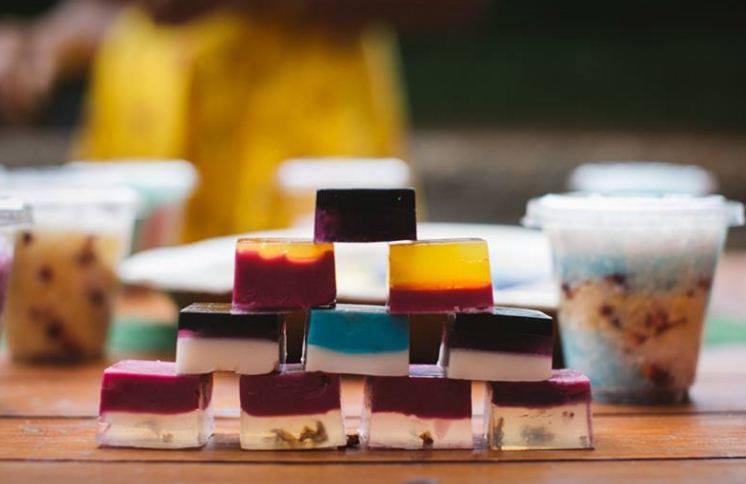Saponification in the Soap Making Refine
November 14, 2018 at 1:24 am,
No comments

Soap making is an easy process that requires couple of ingredients or devices actually, a number of the ingredients and devices may currently be in your kitchen area. Soap making requires cautious measurements as you are making use of chemicals, a few of which can be dangerous. The chemicals produce responses: saponification is the key chemical reaction of soap production.
Exactly How Saponification Happens
Saponification is an exothermic (emits warmth) chain reaction that takes place when fats or oils (fatty acids) come into call with lye (a base). Saponification literally indicates "becoming soap" from the origin word, "sapo," which is Latin for soap. The byproducts of the saponification response, in which the fatty acid and the base integrate, are glycerin and also soap.
Soap Making Calculator
Oils as well as fats each have what is called a saponification worth, which is the amount of lye required to totally counteract them right into the soap without lye left over. Each oil has a different worth, which is why it s vital to constantly run soap recipes via a lye calculator. The calculator will certainly help make certain that the proportions of water, oils, and lye are proper and will create the outcomes you are seeking.
Homemade Soap Contents
There are numerous variables that will influence saponification as well as different soap components have very distinct qualities. Make sure to look into the types of acids you are using (ex-spouse: coconut oil, olive oil, and so on) and the outcomes they may have on the final soap product. Relying on the ingredients utilized, soaps can differ greatly with various characteristics such as soap, bar uniformity, and cleaning ability.
A lot of the components for soap making can be found in a grocery store or hardware shop, which are also used by soap company like D and C. Make sure to buy pure top notch lye that is made especially for soap making. In addition to the standard soap active ingredients, there are lots of options that can be contributed to the soap to modify the scent, consistency, and shade of the soap. When the basic soap making has proven successful, try experimenting with other soap variants.
The saponification typically takes regarding 24-48 hrs to finish once the lye and oils have actually been combined and also the raw soap has actually been poured right into the mold and mildew. This procedure can be quickened by adding even more warmth or decreased by maintaining the procedure really cool.
Saving Homemade Soap
Homemade soap should be left to air dry for roughly 4 to six weeks. This is referred to as the curing time and also it will allow for any kind of excess water to evaporate out of the soap. It's best for the soap to be in a great, completely dry place, not touching anything else, while it is drying. A footwear box in a dark wardrobe is a perfect place. If the homemade soaps contain any kind of fragrances, store each fragranced soap in its very own box so the scents do not mix. When the soap is cured, make sure to classify it with the active ingredients made use of and the date the soap was made.
To get more information about how to Speed Up or Decrease Trace in Homemade Soaps click here.